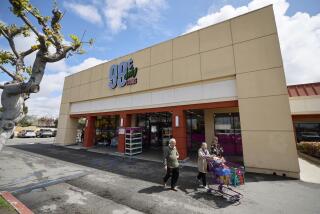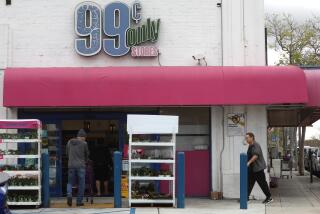The Variety Store
The American variety store was born in 1879, when Frank Winfield Woolworth opened The Great Five Cent Store in Utica, N.Y. It soon failed.
But Woolworth persevered, opening another store that same year in Lancaster, Pa., where merchandise sold for no more than 5 cents. Woolworth then put his own name on the store and, after his first two branches failed, finally succeeded with a third branch store in Scranton, Pa.
When Woolworth died in 1919, the company had 1,081 stores with annual sales of $119 million. By that time, imitators of Woolworth’s five-and-dime had proliferated.
Among them was John G. McCrorey, who opened his first store in 1882 in Scottsdale, Pa. A cost-efficient manager, McCrorey dropped the “e” from his name to cut the cost of his stores’ gilt-letter signs.
Sebastian S. Kresge launched a store in 1897 with J. G. McCrorey. Those five-and-dime stores became the forerunners of the modern K mart Corp. and its discount department store format. K mart sold the last of its Kresge stores last year.
J. J. Newberry opened his first dime store in 1909, only 60 miles from Woolworth’s Lancaster store. T.G.& Y. got its start during Oklahoma’s Dust Bowl days, when three merchants named Tomlinson, Gosselin and Young combined their separate stores into a small chain. There were others, many of which long ago rang up their last sale.
In these days of fast food and specialty retailing, the old-fashioned dime store lunch counter is becoming a rare sight. But they still exist.
At the J. J. Newberry store in Glendale, Dean McFall has served breakfast specials and soups of the day for nine years.
“When there’s no profit, they pull them out,” she said of the disappearing lunch counters. “Fast food has never been a competitor with me,” McFall said, getting coffee for one of her many regulars. “I think our prices have a lot to do with it and the quality of the food.”
McFall said her most popular item is the grilled cheese sandwich--alone or with fries and slaw. “I sell a lot of that.”
McCrory Stores, parent of J.J. Newberry and several other variety store chains, said it has food service operations in 300 of its 1,300 stores.
Sprouse-Reitz Stores, a regional chain in 11 Western states, closed its last lunch counter in 1954 in Lodi, Calif., because of low profits. Besides, a 1984 company retrospective noted, “Ronald McSprouse just doesn’t have the right ring to it.”
The five-and-dime is truly a thing of the past if you have only 10 cents in your pocket.
While many modern variety stores get close--thread at five for $1 at J. J. Newberry, for example--most have trouble pointing to anything other than a 10-cent gumball machine near the door.
“Is it still possible to buy something for 10 cents? Unfortunately, no,” said a spokeswoman for McCrory Stores, which owns variety stores under the names McCrory, J. J. Newberry, T. G. & Y., McLellan, H. L. Green, Kress, Silver, Elmore, Britts and Kittinger.
At La Canada Variety, “an easy 40 items in this store sell for a dime,” co-owner Pam Glynn said. For example, the small independent variety store carries chenille stems--also known as pipe cleaners, which are used for crafts--at three for 10 cents, while metallic stems are five cents each. But most of the lowest-priced items are for children--from squirt guns to suckers to “squiggly worms,” Glynn said.
At the Woolworth chain, prices first rose above 10 cents in 1932 and all price limits were removed in 1935.
More to Read
Inside the business of entertainment
The Wide Shot brings you news, analysis and insights on everything from streaming wars to production — and what it all means for the future.
You may occasionally receive promotional content from the Los Angeles Times.










